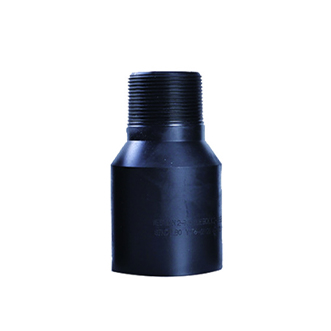- Afrikaans
- Albanian
- Amharic
- Arabic
- Armenian
- Azerbaijani
- Basque
- Belarusian
- Bengali
- Bosnian
- Bulgarian
- Catalan
- Cebuano
- Corsican
- Croatian
- Czech
- Danish
- Dutch
- English
- Esperanto
- Estonian
- Finnish
- French
- Frisian
- Galician
- Georgian
- German
- Greek
- Gujarati
- Haitian Creole
- hausa
- hawaiian
- Hebrew
- Hindi
- Miao
- Hungarian
- Icelandic
- igbo
- Indonesian
- irish
- Italian
- Japanese
- Javanese
- Kannada
- kazakh
- Khmer
- Rwandese
- Korean
- Kurdish
- Kyrgyz
- Lao
- Latin
- Latvian
- Lithuanian
- Luxembourgish
- Macedonian
- Malgashi
- Malay
- Malayalam
- Maltese
- Maori
- Marathi
- Mongolian
- Myanmar
- Nepali
- Norwegian
- Norwegian
- Occitan
- Pashto
- Persian
- Polish
- Portuguese
- Punjabi
- Romanian
- Russian
- Samoan
- Scottish Gaelic
- Serbian
- Sesotho
- Shona
- Sindhi
- Sinhala
- Slovak
- Slovenian
- Somali
- Spanish
- Sundanese
- Swahili
- Swedish
- Tagalog
- Tajik
- Tamil
- Tatar
- Telugu
- Thai
- Turkish
- Turkmen
- Ukrainian
- Urdu
- Uighur
- Uzbek
- Vietnamese
- Welsh
- Bantu
- Yiddish
- Yoruba
- Zulu
tubing and casing
Understanding Tubing and Casing in Oil and Gas Production
In the oil and gas industry, efficient extraction of hydrocarbons requires a complex system of materials and technologies. Among the critical components of this system are tubing and casing—two essential elements that play distinct roles throughout the life cycle of a well. This article will explore the definitions, purposes, materials, and installation processes related to tubing and casing.
Definition and Purpose
Casing is a series of steel pipes that line the drilled wellbore. Its primary purpose is to support the walls of the well, preventing collapses due to external pressures from surrounding formations. Additionally, casing serves to isolate different geological formations, thereby minimizing the risk of cross-flow of fluids and protecting freshwater aquifers. It is a key barrier that safeguards the well, ensures safe operations, and maintains environmental safety.
On the other hand, tubing is a smaller-diameter pipe that is run inside the casing to transport hydrocarbons (oil and gas) to the surface. Tubing provides a conduit through which hydrocarbons can flow up from the reservoir to the production facilities. Unlike casing, which is a permanent installation, the tubing can be removed and replaced during maintenance or if improvements to production techniques are required.
Types of Casing
Different types of casing serve various functions and are chosen based on the specific geology of the well, the nature of the hydrocarbons being extracted, and the environmental regulations in place. The most common types include
1. Conductor Casing This is the first casing installed, which provides initial support for the well and serves as a protective barrier against shallow formations.
3. Intermediate Casing Used in deeper wells, this casing provides support and isolates intermediate geological formations.
tubing and casing

4. Production Casing The final casing installed, which allows for the extraction of hydrocarbons. It may also be equipped with perforations to facilitate flow.
5. Liner A type of casing that does not extend all the way to the surface; instead, it is placed within another casing string to provide additional support and isolation.
Materials Used
Both tubing and casing are predominantly made from steel, chosen for its strength and resistance to pressures encountered in deep wells. The steel used can be either carbon steel or alloy steel, varying based on the specific environmental conditions of the well. For example, sour gas wells, which contain hydrogen sulfide, may require special corrosion-resistant alloys to ensure durability and safety.
Installation Process
The installation of tubing and casing is a critical phase in well construction. The process begins with drilling the wellbore using a drill bit. After reaching a predetermined depth, casing is inserted into the well. Cement is then pumped down through the casing and up the annular space between the casing and the wellbore, providing a secure bond that stabilizes the casing and seals off formations.
The tubing is subsequently installed inside the casing. Special care is taken during this installation to ensure that connections are tight and leak-proof. The tubing must be regularly inspected and maintained throughout its operational life, as any failures can lead to significant production losses and environmental hazards.
Conclusion
In summary, tubing and casing are vital components of the oil and gas production process, each fulfilling distinct roles yet working together to ensure safe and efficient extraction of resources. By providing critical structural support and facilitating the flow of hydrocarbons, these elements allow for the effective management of wells from initiation through to production. As technology advances, the materials and methods used in the installation and maintenance of tubing and casing will continue to evolve, contributing to more efficient and environmentally friendly oil and gas extraction practices. Understanding these components not only helps industry professionals optimize their operations but also reassures the public of the safety measures in place to protect both the environment and human health.
-
Well Casing Extension Couplings – Applications and InstallationNewsJun.06,2025
-
Types of Crossover Subs in Drilling & CompletionNewsJun.06,2025
-
Key Features of High-Quality Tubing Pup JointsNewsJun.06,2025
-
Installation and Maintenance Tips for Steel Couplings for PipeNewsJun.06,2025
-
How to Select the Right Pup Joint for Oil & Gas OperationsNewsJun.06,2025
-
Applications of Stainless Steel Pipe CouplingsNewsJun.06,2025







